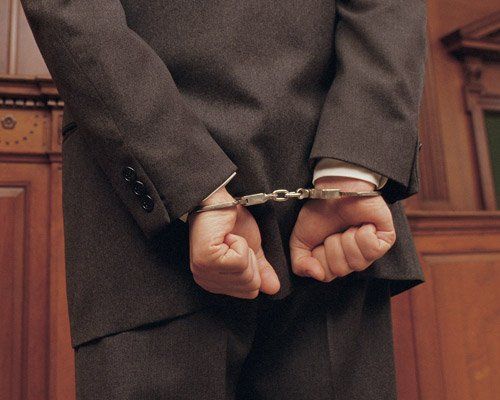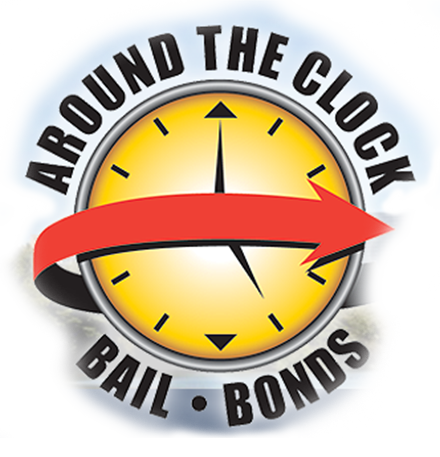Blog

Bail is a set amount of money that is given to a court to ensure that a criminal defendant will return for a court appearance after an arrest. Though we often hear about bail in criminal proceedings and that a judge has set bail at a certain amount, it can be hard for those outside of the legal profession to understand how the process works and how a judge decides what’s an appropriate amount. How is the amount of bail needed to ensure that the defendant will return to court set? What are the factors involved? Here’s an overview of the key points that will be considered when a judge sets bail. The judge will take into consideration: The nature of the crime committed and the circumstances surrounding it. The evidence that exists against the defendant and how likely it is to lead to conviction. The defendant’s history in a community as well as family ties, their mental state, their finances and employment history. The past and present conduct of the defendant including whether or not they have ever been convicted of a crime and if they ever failed to appear when called to court. The defendant’s criminal history and the chance that they will be a threat to the community if they are released after an arrest. A defendant’s criminal status. This is a major factor in setting bail. If the defendant is currently already on parole, on probation or on release from another crime, these factors will definitely impact the amount of bail set. The source of a defendant’s finances. This is a factor, especially if their income seems to stem from a history of criminal activity. If the arrest is on a drug-related charge. If drugs are involved, the street value of the drugs will have a definite impact on the amount of bail set. A high value on the drugs would indicate a high level of bail, as the higher level points to more serious charges against the defendant. In general, the law gives a judge great leeway in setting bail, as judges are allowed to consider any other factors that seem relevant to the case, above and beyond the factors listed above. Once bail is set, the defendant must endure a booking process and then post the bail or arrange to have it posted for them. Upon release, the defendant will wait for an arraignment of their case. If a defendant is not deemed a “flight risk” by the court (that is to say, the judge does not believe that the defendant would fail to show up for their scheduled court appearance) they may be released on their own “recognizance.” In that case, they would be expected to appear in court and be responsible for getting there at the appointed time and day. All of the above factors have a lot to do with the dollar amount that is set for a defendant’s bail but, clearly, the judge in the case has the ultimate power to set that amount according to their understanding of the nature of the crime and the defendant’s character.

When a person is arrested for a crime, they’re taken into custody and booked accordingly. After all of the paperwork has been completed, suspects go through a bail hearing. Bail is the process by which a person is either released or held in jail. The majority of misdemeanor crimes require a person to be released automatically, but felonies have varying consequences. In fact, bail can be denied entirely in specific cases. Repeat Offender If a suspect has been charged with a crime while on parole, the court doesn’t often have sympathy for that person. They’ve displayed no regard for their previous crime or concerns for the current offense. In response, a judge could deny bail on the grounds that the suspect will only willfully commit offenses again while allowed to go free. It’s often safer to keep the suspect in custody until a trial can be decided for the good of society. Flight Risk A suspect could be a flight risk and denied bail. A flight risk is a person who displays erratic behavior and might leave the city, state or country. It’s more difficult to try a person for a crime if they’re housed in an entirely different country, for instance. When a judge sees a history of running from the law, they’ll normally err on the side of caution and keep the person in jail. A flight risk often extends to non-citizens too because they can exit the country faster than a United States citizen. Severe Crime Involvement The United States justice system cannot let a person accused of brutal murder out on bail. Severe crimes like these must be treated with the utmost respect. Every severe crime, from manslaughter to rape, is treated differently than other charges. These suspects must be held in custody until they’re released according to a jury’s guilty or innocent decision. The court cannot be held responsible if a released suspect commits another severe crime while awaiting trial. Immediate Threat to Self or Others Unstable suspects cannot be released on bail because they could hurt themselves or others. In certain situations, the court may release the suspect into a treatment facility instead of jail while a trial is being prepared. Every situation is unique, however, so judges must take the person’s medical and personal history into account before deciding on the right course of action. Outright bail is never granted to potentially violent offenders. Denied Bail Response The judge is the final decision-maker when it comes to setting bail. If a suspect is denied bail, they must return to jail and wait until their next hearing. Suspects can ask for another bail release at this next hearing date. In other cases, some suspects even appeal to a higher court system for a different bail outcome. Suspects must have a specific, positive reason for their potential release, because the higher court will uphold the previous judge’s decision if extenuating circumstances aren’t involved. In the end, the presiding judge must decide on what is safe for the suspect and the surrounding neighborhood. It’s in the suspect’s best interest to remain within the law while they’re out on bail. Judges and juries are more lenient toward suspects who respect their bail and face their mistakes in a court of law. Jumping or skipping bail only creates more problems for the suspect in the future.

Bail is a set amount of money that is given to a court to ensure that a criminal defendant will return for a court appearance after an arrest. Though we often hear about bail in criminal proceedings and that a judge has set bail at a certain amount, it can be hard for those outside of the legal profession to understand how the process works and how a judge decides what’s an appropriate amount. How is the amount of bail needed to ensure that the defendant will return to court set? What are the factors involved? Here’s an overview of the key points that will be considered when a judge sets bail. The judge will take into consideration: The nature of the crime committed and the circumstances surrounding it. The evidence that exists against the defendant and how likely it is to lead to conviction. The defendant’s history in a community as well as family ties, their mental state, their finances and employment history. The past and present conduct of the defendant including whether or not they have ever been convicted of a crime and if they ever failed to appear when called to court. The defendant’s criminal history and the chance that they will be a threat to the community if they are released after an arrest. A defendant’s criminal status. This is a major factor in setting bail. If the defendant is currently already on parole, on probation or on release from another crime, these factors will definitely impact the amount of bail set. The source of a defendant’s finances. This is a factor, especially if their income seems to stem from a history of criminal activity. If the arrest is on a drug-related charge. If drugs are involved, the street value of the drugs will have a definite impact on the amount of bail set. A high value on the drugs would indicate a high level of bail, as the higher level points to more serious charges against the defendant. In general, the law gives a judge great leeway in setting bail, as judges are allowed to consider any other factors that seem relevant to the case, above and beyond the factors listed above. Once bail is set, the defendant must endure a booking process and then post the bail or arrange to have it posted for them. Upon release, the defendant will wait for an arraignment of their case. If a defendant is not deemed a “flight risk” by the court (that is to say, the judge does not believe that the defendant would fail to show up for their scheduled court appearance) they may be released on their own “recognizance.” In that case, they would be expected to appear in court and be responsible for getting there at the appointed time and day. All of the above factors have a lot to do with the dollar amount that is set for a defendant’s bail but, clearly, the judge in the case has the ultimate power to set that amount according to their understanding of the nature of the crime and the defendant’s character.

When a person is arrested for a crime, they’re taken into custody and booked accordingly. After all of the paperwork has been completed, suspects go through a bail hearing. Bail is the process by which a person is either released or held in jail. The majority of misdemeanor crimes require a person to be released automatically, but felonies have varying consequences. In fact, bail can be denied entirely in specific cases. Repeat Offender If a suspect has been charged with a crime while on parole, the court doesn’t often have sympathy for that person. They’ve displayed no regard for their previous crime or concerns for the current offense. In response, a judge could deny bail on the grounds that the suspect will only willfully commit offenses again while allowed to go free. It’s often safer to keep the suspect in custody until a trial can be decided for the good of society. Flight Risk A suspect could be a flight risk and denied bail. A flight risk is a person who displays erratic behavior and might leave the city, state or country. It’s more difficult to try a person for a crime if they’re housed in an entirely different country, for instance. When a judge sees a history of running from the law, they’ll normally err on the side of caution and keep the person in jail. A flight risk often extends to non-citizens too because they can exit the country faster than a United States citizen. Severe Crime Involvement The United States justice system cannot let a person accused of brutal murder out on bail. Severe crimes like these must be treated with the utmost respect. Every severe crime, from manslaughter to rape, is treated differently than other charges. These suspects must be held in custody until they’re released according to a jury’s guilty or innocent decision. The court cannot be held responsible if a released suspect commits another severe crime while awaiting trial. Immediate Threat to Self or Others Unstable suspects cannot be released on bail because they could hurt themselves or others. In certain situations, the court may release the suspect into a treatment facility instead of jail while a trial is being prepared. Every situation is unique, however, so judges must take the person’s medical and personal history into account before deciding on the right course of action. Outright bail is never granted to potentially violent offenders. Denied Bail Response The judge is the final decision-maker when it comes to setting bail. If a suspect is denied bail, they must return to jail and wait until their next hearing. Suspects can ask for another bail release at this next hearing date. In other cases, some suspects even appeal to a higher court system for a different bail outcome. Suspects must have a specific, positive reason for their potential release, because the higher court will uphold the previous judge’s decision if extenuating circumstances aren’t involved. In the end, the presiding judge must decide on what is safe for the suspect and the surrounding neighborhood. It’s in the suspect’s best interest to remain within the law while they’re out on bail. Judges and juries are more lenient toward suspects who respect their bail and face their mistakes in a court of law. Jumping or skipping bail only creates more problems for the suspect in the future.




